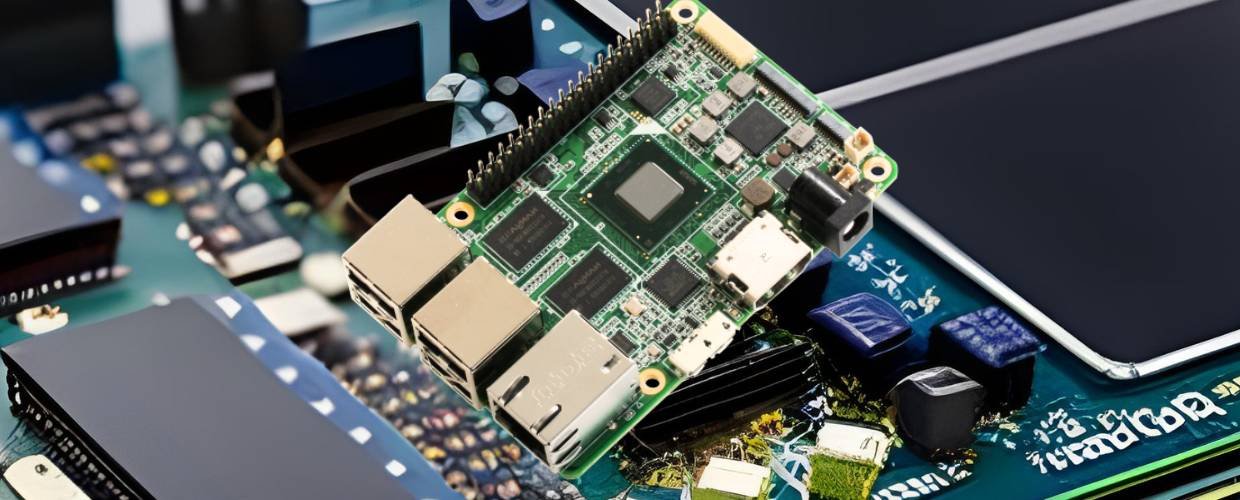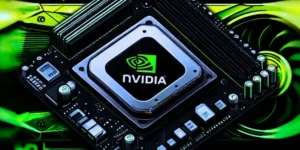The UP Board is a powerful single-board computer (SBC) designed to cater to the needs of makers, developers, and enthusiasts. Developed by AAEON, a subsidiary of ASUS, it provides a compact yet feature-rich computing solution. With impressive hardware specifications and extensive connectivity options, it is well-suited for various applications, from IoT and robotics to digital signage and AI edge computing. In this article, we will explore the features, applications, and benefits of the UP Board, highlighting its performance, versatility, and expandability.
What is the UP Board?
The UP Board is a single-board computer (SBC) developed by AAEON, a subsidiary of ASUS. It is designed to provide a versatile and powerful computing platform in a compact form factor. It is widely used in various applications, including industrial automation, robotics, IoT, digital signage, and more. The UP Board features an Intel Atom or Intel Celeron processor, providing a range of performance options depending on the specific model. It supports various configurations of RAM, ranging from 2 GB to 8 GB, allowing users to choose the appropriate memory capacity for their needs. Connectivity options include USB ports, Ethernet, HDMI, or DisplayPort outputs for video, audio jacks, and a microSD card slot for storage.
It also features a 40-pin GPIO header, allowing easy integration with external devices and peripherals. The board supports multiple operating systems, including Windows, Linux, and Android, providing flexibility and compatibility with various software applications. This makes it suitable for developers and enthusiasts who prefer different operating systems or have specific software requirements. It offers expandability through various expansion options, such as mini-PCIe slots, M.2 slots, and additional headers for connecting add-on modules and accessories.
Key Features and Functionalities of the UP Board
It offers a range of key features and functionalities, making it a compelling choice for makers and developers. Let’s explore some notable characteristics.
Intel Atom Processor
It is powered by an Intel Atom processor, balancing power efficiency and performance. The processor allows for efficient multitasking, responsive operation, and support for various applications, from simple tasks to more demanding workloads.
High-Resolution Graphics
With integrated Intel HD graphics, it capable to delivers excellent graphics performance. It supports high-resolution displays and can handle multimedia content, video playback, and graphics-intensive applications. This makes it suitable for digital signage, kiosks, and other visual-centric projects.
Extensive Connectivity Options
The UP Board offers a comprehensive range of connectivity options, including USB ports, HDMI and DisplayPort outputs, Ethernet, Wi-Fi, Bluetooth, and more. These options enable easy integration with various peripherals, displays, networking devices, and sensors, ensuring seamless connectivity and expandability.
Expandable Storage and Memory
The UP Board provides multiple options for storage expansion, including SATA connectors, M.2 slots, and microSD card slots. This allows users to increase storage capacity according to their specific needs. Additionally, it can support memory expansion, enabling users to upgrade RAM for enhanced performance and multitasking capabilities.
GPIO and MIPI-CSI Interfaces
The UP Board offers GPIO (General Purpose Input/Output) pins and MIPI-CSI (Mobile Industry Processor Interface – Camera Serial Interface) connectors. These interfaces allow for integrating external sensors, cameras, and other hardware components, enabling makers to build projects that interact with the physical world or capture visual data.
Applications of the UP Board
The UP Board finds applications in various industries and projects due to its performance, versatility, and expandability. Let’s explore some notable applications.
Internet of Things (IoT) Development
With its processing power and extensive connectivity options, the UP Board is an ideal platform for IoT development. Makers can create IoT devices, edge computing solutions, and home automation systems that leverage the UP-Board’s computing capabilities, connectivity, and support for external sensors and actuators.
Robotics and Automation
The UP Board provides a powerful computing platform for robotics and automation projects. Its compact size, high-resolution graphics, and GPIO interfaces enable the development of intelligent robots, automated systems, and machine vision applications. The UP-Board’s processing power allows for real-time control and advanced algorithm execution.
Digital Signage and Kiosks
The UP-Board’s graphics performance and connectivity options suit digital signage and interactive kiosk applications. It can drive high-resolution displays, deliver dynamic content, and support touch interfaces. It can compact form easily integrates into signage displays or kiosk enclosures.
Edge AI and Machine Learning
With its processing power and support for advanced computing tasks, the UP Board is well-suited for edge AI and machine learning applications. It can handle AI inference, image recognition, and data analytics at the edge, minimizing latency and enabling real-time decision-making in AI-powered systems.
Educational and DIY Projects
The UP Board is an excellent platform for educational projects and do-it-yourself (DIY) enthusiasts. Its expandability, GPIO interfaces, and compatibility with popular software and programming languages make it a valuable tool for teaching coding, electronics, and computer science. Students and makers can use the It can makes develop innovative projects and learn practical skills.
Benefits of the UP Board
The UP Board offers several benefits, making it an attractive choice for makers, developers, and enthusiasts. Let’s explore some of its advantages.
High Performance in a Compact Form Factor
The UP Board provides high-performance computing capabilities in a compact, energy-efficient form factor. Its powerful processor, graphics capabilities, and expandability allow for a wide range of applications while minimizing space requirements.
Extensive Connectivity Options
The UP Board offers a comprehensive range of connectivity options, ensuring seamless integration with various peripherals, displays, and networking devices. This flexibility enables users to connect and interact with a wide array of components, expanding the possibilities of their projects.
Expandability and Customization
The UP-Board’s support for storage and memory expansion and its GPIO interfaces allow for easy customization and adaptability to specific project requirements. Users can scale up storage capacity, increase memory, or integrate external hardware components to tailor the board to their unique needs.
Versatility and Compatibility
The UP Board is compatible with popular software frameworks, programming languages, and operating systems. This compatibility ensures developers and makers can leverage their existing knowledge and skills, making it accessible and versatile for various projects.
Community and Support
The UP-Board benefits from an active and supportive community of makers, developers, and enthusiasts. This community provides resources, tutorials, and forums for sharing knowledge, troubleshooting, and collaboration. Users can rely on the community’s expertise and support for guidance and inspiration.
Conclusion
The UP Board is a powerful and versatile single-board computer that empowers makers, developers, and enthusiasts to bring their ideas to life. With its high-performance hardware, extensive connectivity options, and expandability, the UP Board finds applications in IoT development, robotics, digital signage, AI edge computing, and educational projects. The compact form factor, performance, versatility, and support of the UP Board make it attractive for users seeking a powerful and customizable computing solution. By harnessing the capabilities of the UP Board, makers can innovate, develop, and unleash their creativity in a wide range of computing projects.









